
We scour every corner of the globe for the wildest, juiciest gemstones in fantastic colors and staggering sizes.
We find the most mouthwatering watermelon-pinks. The most brilliant blues. Moody purples. Sunny yellows. And even stones like Alexandrite that change their hue before your eyes.
But we understand that sometimes, you’re a minimalist. And you want to wear the whitest-white stone on earth. Perhaps it’s an engagement solitaire. Or maybe you’re just purifying your palette.
White is the absence of all colors in the visible spectrum. But a high-quality gemstone will refract the rainbow, and bounce a shimmering dance of all colors around your skin and the entire room when the light hits the stone just right.
Who’s really a girl’s best friend?
When you think of a dazzling white stone, the first thing that comes to mind is a diamond.
In 1947, gem industry pioneer De Beers launched its now-classic slogan, “A Diamond is Forever”—an indelible marketing angle which seemed to imply that the marriage would last forever, too.
Here’s a news flash. Diamonds aren’t your only choice.
In 1982, journalist Edward J. Epstein published an article called “Have You Ever Tried to Sell a Diamond?” in The Atlantic. In this surprising article, Epstein writes about what he calls the “diamond invention,” which was basically De Beers’ shrewdly fictionalized position that diamonds are the rarest, most valuable gemstones, and the most worthy of esteem, beginning in the late 19th century. Shrewd public relations campaigns correlated the diamond engagement ring not only with romance, but also with a man’s earning power and social desirability.
During the late 1940s, the De Beers’ advertising agency sent lecturers to visit high schools across the country, pitching the notion of diamond-ownership to teens who would soon marry.
In the mid-1960s, De Beers entered the Japanese market, where a deeply rooted tradition of arranged marriages made Western-style courtship seem unlikely.
Wrong.
By 1981, 60 percent of engaged Japanese women wore a diamond engagement, and it had become a symbol of embracing desirable American-style prosperity and status.
By the 2000s, the Western practice of wearing a diamond engagement ring also caught fire in China and India, overriding centuries of Asian wedding traditions.
Here’s the bottom line: if you want a white stone for your engagement ring or other piece of jewelry, surprise yourself by trying out a few white sapphires and white zircons.
Their sparkle is enough to change your mind about who’s your BFF.
Something borrowed, something blue…
Sapphires are nothing new in the venue of romantic jewelry.
Except they’ve usually been cornflower blue or another shade of blue.
We’d love to talk with you about creating a sapphire ring that combines white and blue for your wedding day, or just because.
Napoleon’s ”Toi et moi” (“You and I”) engagement ring to Josephine made sapphires a romantic favorite in Western Europe for centuries.
Queen Victoria, Princess Diana and the current Duchess of Cambridge have all worn sapphires given to them by the men they loved.
But the allure of sapphires dates back to the ancient world.
The entire universe rests on an enormous blue sapphire, according to one Persian origin story.
To this day, some builders place a blue sapphire in the foundation of a new building as it is constructed.
In ancient Greece, it was believed that the sun-god Apollo, who ruled over clarity and order, chose to communicate through sapphires.
The oracle of Delphi, known as The Pythia, wore sapphires as she prophesied. By wearing these precious gems, she was able to de-code the god’s mysterious answers to questions that he sent via the cryptic rustling of laurel-leaves.
Petitioners seeking advice from Apollo via The Pythia also carried sapphires with them during their consultation, believing that the gems gave humans insight into the mind of divinity.
Pure Magic
White sapphire, known as “leucosapphire,” is the purest form of corundum, the aluminum oxide mineral that also gives us rubies.
What allows the stone to form in a colorless state is the absence of impurities or trace minerals, making this stone quite rare.
Clarity is an important value-factor when selecting a white sapphire, since there is no color present to mask inclusions (flaws).
Metaphysical healers say that white sapphire invigorates the subtlest energy meridians in the brain, increasing our capacity to receive signals from other dimensions, including psychic and telepathic abilities.
In the ancient system of the chakras, white sapphire stimulates the crown chakra, the source of our spirituality.
The idea of a white zircon is also eye-opening.
Don’t be confused by the name. It has no relationship to the cubic zirconium, an inexpensive diamond substitute.
White zircon is from the neosilicate mineral family. It is one of the oldest minerals on earth.
Zircon rates 6 to 7.5 on the Mohs scale, meaning that it is not as durable as a sapphire. Yes, diamonds hold the top spot for toughness at 10 on the Mohs scale.
Zircon displays fire and luster which are optically similar to a diamond, and is one of the most brilliant of all colorless gemstones.
Undecided?
Pink, purple, or pool-turquoise gems driving you wild?
We know the feeling.
Fashion experts predict that non-traditional wedding rings with unusual stones are the shape of things to come.
According to BRIDES magazine, new ideas for engagement rings include emeralds, black diamonds, unique-shaped diamonds (emerald, marquise and pear-shaped cuts), modern three-stone rings (thanks, Meghan Markle), statement bands en lieu of the conventional solitaire and bands, and open-ring construction.
We love sharing our expertise, and our atelier can create whatever you’re dreaming of.
Connect with us via Zoom for a no-charge consultation regarding your next jewelry purchase.

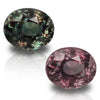 Alexandrite
Alexandrite Amethyst
Amethyst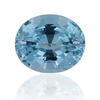 Aquamarine
Aquamarine Chrysoberyl
Chrysoberyl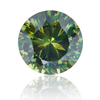 Demantoid
Demantoid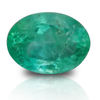 Emerald
Emerald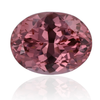 Garnet
Garnet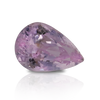 Kunzite
Kunzite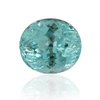 Paraiba
Paraiba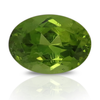 Peridot
Peridot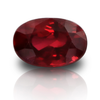 Ruby
Ruby Sapphire
Sapphire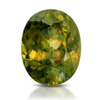 Sphene
Sphene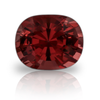 Spinel
Spinel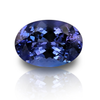 Tanzanite
Tanzanite Topaz
Topaz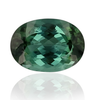 Tourmaline
Tourmaline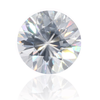 Zircon
Zircon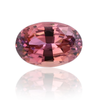 Zoisite
Zoisite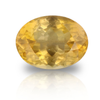 Rare Gemstones
Rare Gemstones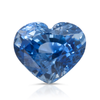 Heart Shape
Heart Shape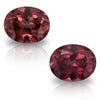 Matched Duo
Matched Duo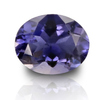 Everyday Candy
Everyday Candy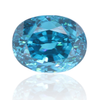 Insta Therapy
Insta Therapy Mini-Splurge
Mini-Splurge